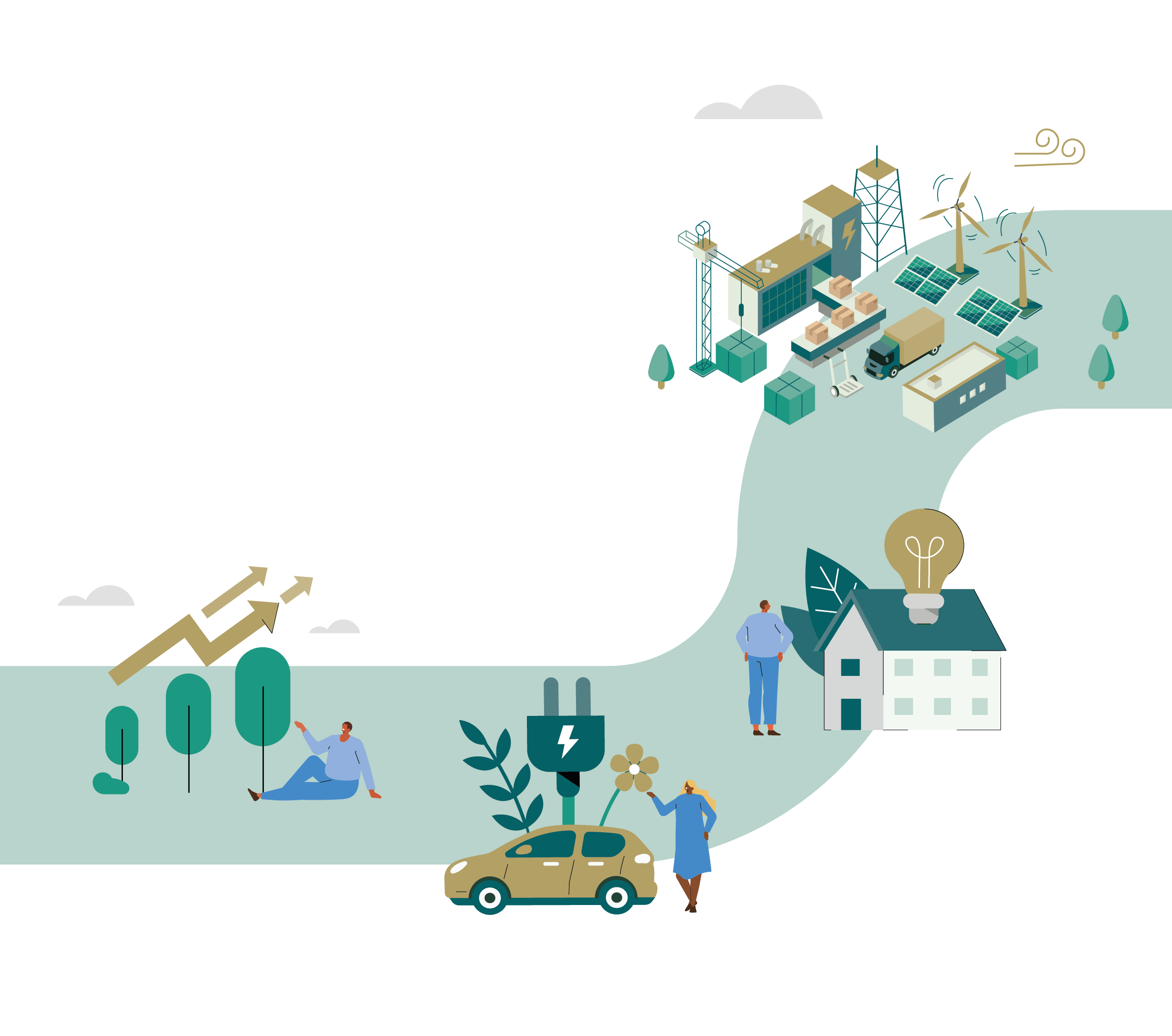Innovation and Research
Innovation and research are essential in getting us to where we need to be by enabling solutions to realise benefits of renewable and sustainable energy.

Innovating Our Power System
Involvement in innovation and research is vital for EirGrid.
Innovation is the active pursuit and implementation of new solutions. These can be established or novel.
Research is the process of horizon scanning and investigation. It furthers our understanding of future challenges and opportunities to deliver a net zero power system.
Innovation and Research Strategy
Our strategy outlines our innovation and research purpose as ‘enabling solutions that realise sustainable energy benefits’.
To achieve this, we are refining our approach to innovation. By actively pursuing and implementing new solutions, we can enhance the way we work and the technologies we use.
We are also enhancing our approach to research, horizon scanning and investigating. For more information please see the Innovation and Research Strategy.

Strategic Innovation Programmes
The programmes outlined have different timescales as to when the benefits will be realised, however all of them need to begin imminently to ready ourselves, so we can meet the targets. We refer to these as our Strategic Innovation Programmes.

Collaboration Proposals
Collaboration with our partners is key to efficient research. It also supports us to identify, trial, and scale innovative programmes of work. Whilst we continue to develop and evolve the strong relationships we have with our current partners, we are always open to building new collaborative partnerships.
If you have a research proposal or an innovation initiative you would like to discuss, or want to request a letter of support, please follow the steps below:
- Please email research@eirgrid.com with a proposal
- We will contact you if we need additional information
- We will assess the request and provide you with our decision within 6 weeks

Documents
Innovation and Research Strategy
Innovation and research is ever-increasing in importance to EirGrid. We have refreshed our Innovation and Research Strategy in this light. The strategy will guide us to realise our energy transition ambitions.
The document envisages an enhanced innovation and research strategy that is informed, trusted, accessible and responsible. It sets out key enablers that will mature our capability and outlines our Strategic Innovation Programmes.
The strategy outlines key elements for success, including:
- Embracing the 'learn fast, move on' principle
- Collaborating with a diversified network of partners to jointly enable whole- system solutions
- Recognising in-flight projects and programmes that are already transitioning the electricity sector to low-carbon, renewable energy
Annual Innovation Report
Our Annual Innovation Report lays out our innovative programmes of work and the areas of interest for future innovation. It shows:
- Completed projects and their benefits
- Ongoing projects and the progress that has been made
- Future targeted projects and the potential opportunities they could bring

Take Part in Our Innovation and Research Activities
Collaboration with our partners is key to efficient research. It's also vital for identifying, trailing, and scaling innovative programmes of work.
We are always open to building new collaborative partnerships. If you have a research proposal or an innovation initiative you would like to discuss, please email research@eirgrid.com.